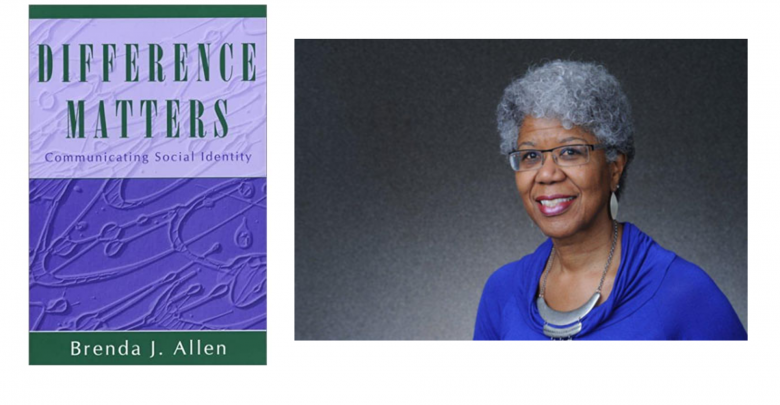Difference Matters
Difference Matters is a book that talks about six of the main dimensions of social identity groups—gender, race, social class, sexuality, ability, and age—and how each of us has privilege in different ways.

Why did I choose this tool?
This book served as the foundational text for a course I took in university that changed my life. It was the most vulnerable and open classroom experience I have had at university, and it was with people from a wide variety of backgrounds. I liked how the book defined different dimensions of social identity and helped me realize that each one of us had a combination of social identities, some in which we had more social power and privilege and others in which we had less. I appreciated how the author highlighted nuances amongst the groups, explained the histories behind how some groups became dominant/nondominant, and overall shared her story in relation to social identity.
How does this apply to being a trainer?
As a trainer, we interact with people who have many social identities and unfortunately, as humans, we see people and often only focus on one of those social identities. For example, if we have a participant in a wheelchair, we may only see them as physically disabled, and not see their other social identities—age, gender, etc.—and this can impact how we interact with them. Being able to communicate social identity gives us the skills to recognize the different social identity dimensions that could exist, and work to find ways to better include people into the training. Furthermore, knowing about these dimensions could help us deal with the power dynamics in the room, highlighting who may have advantages in certain situations and who may not, and how some people may have advantages in different ways. It could also help us find similarities across the differences—e.g., while we may have different gender identities, we have the same social class identity.
Content
Difference Matters is a book written by Brenda J. Allen that highlights the importance of paying attention to the variety of social identities that each one of us has, so that we can improve how we communicate and relate to each other.
Structure of the book
In each chapter, she writes the content and ends with a section called Reflection Matters, where she puts ten prompts, either reflection questions or exercises for you to do, that can help you reflect on your learnings from the chapter and how the concepts relate to your life.
The book addresses six main dimensions of social identity:
- Gender
- Race
- Social class
- Sexuality
- Ability
- Age
At the end of each of these six chapters, she has a section called ID Check, where she gives you twelve questions to help you reflect directly on your identity in the chosen dimension. For example, at the end of Gender Matters, she asks, “7. What situations do you avoid because of apprehensions related to your gender? 8. What situations do you seek because of your gender?”
Overview of the book content
In the first chapter, Difference and Other Important Matters, Allen writes about how we communicate social identity and some of the things that get in the way of seeing difference. Allen defines the concept of dominant and nondominant groups, whereas the former are groups that consist of people who have traditionally seen more economic and social privileges and the latter have seen less economic and social privileges. She ends the chapter by introducing herself as well, delving into how these issues have impacted her on a personal basis—leading the book with vulnerability and giving us a deeper connection to who she is and why she’s working on this.
In the second chapter, Power Matters, she describes what power is and how it shows up in interactions in an organization.
In chapters 3-8, she addresses different social identity groups—gender, race, social class, sexuality, ability, and age—discussing what they are, why they matter, a short history of how they came to be, and how to communicate about them.
In the final chapter, she discusses suggestions and tips on how to communicate social identity.
Some takeaways from the book
Social identity can be relative. In terms of the groups she identified, I identify as a man, white, upper-middle class, heterosexual, able, and young (OK, almost middle aged). However, even how I identify in those categories may not be so clear and can depend against whom I identify myself. For example, upper-middle class may make sense in the American context, but when defining myself against people in Africa, I may be in the rich class; when defining myself against people in Switzerland, I may be in the lower-middle class. Same goes for age—I may be the old person in a room of teenagers, or the young person in a room of retirees.
Social identity can be multifaceted. I belong to many social groups, not just the six she highlights in the book—e.g., AIESEC, people who speak Spanish, people who played American football growing up, etc.—and these add together to create who I am. It also means that other people have multifaceted identities as well.
Difference and similarity exist along a continuum. No one is 100% the same as someone, and no one is 100% different than someone, which can help us realize that there will always be similarities and differences with someone. I gathered from this book the importance to find the differences with someone and also to find the similarities.
Reflection Questions:
- The book discusses six main dimensions of social identity—what are some other dimensions of social identity?
- In which dimensions are you in a dominant group and in which are you in a nondominant group?
- Which chapter/identity dimensions had the most impact on you?
- Of the six social identities listed, which one is most important to you right now?
- Of the six social identities listed, on which of your identities do you think people are most likely to focus?
Exercises:
How to apply it in everyday life
- Read the book and do the exercises in the book.
- Research more about social identity theory.
- Write a short biography where you highlight the different social identities that you have.
- Write short paragraphs for 3 different people trying to identify which social identities they would have in the six different dimensions in the book.
- Set a timer for 10 minutes and write about a time when you had to manage a conflict on a training along one of the social identity dimensions above; e.g., when you had to manage a group where everyone was abled and only one person was disabled.





